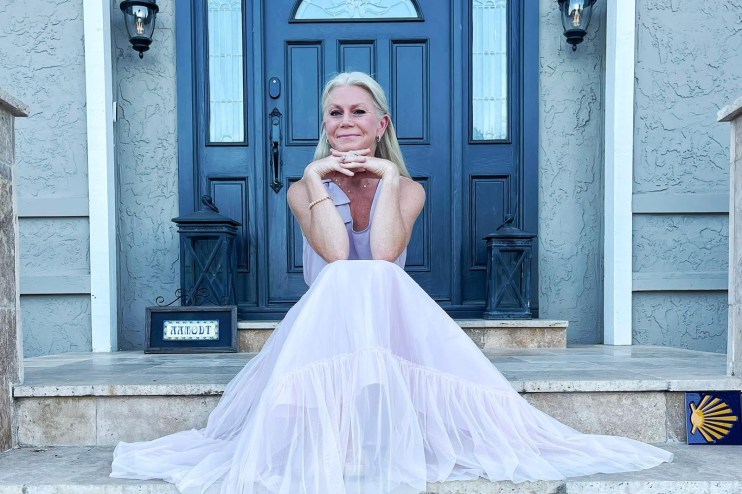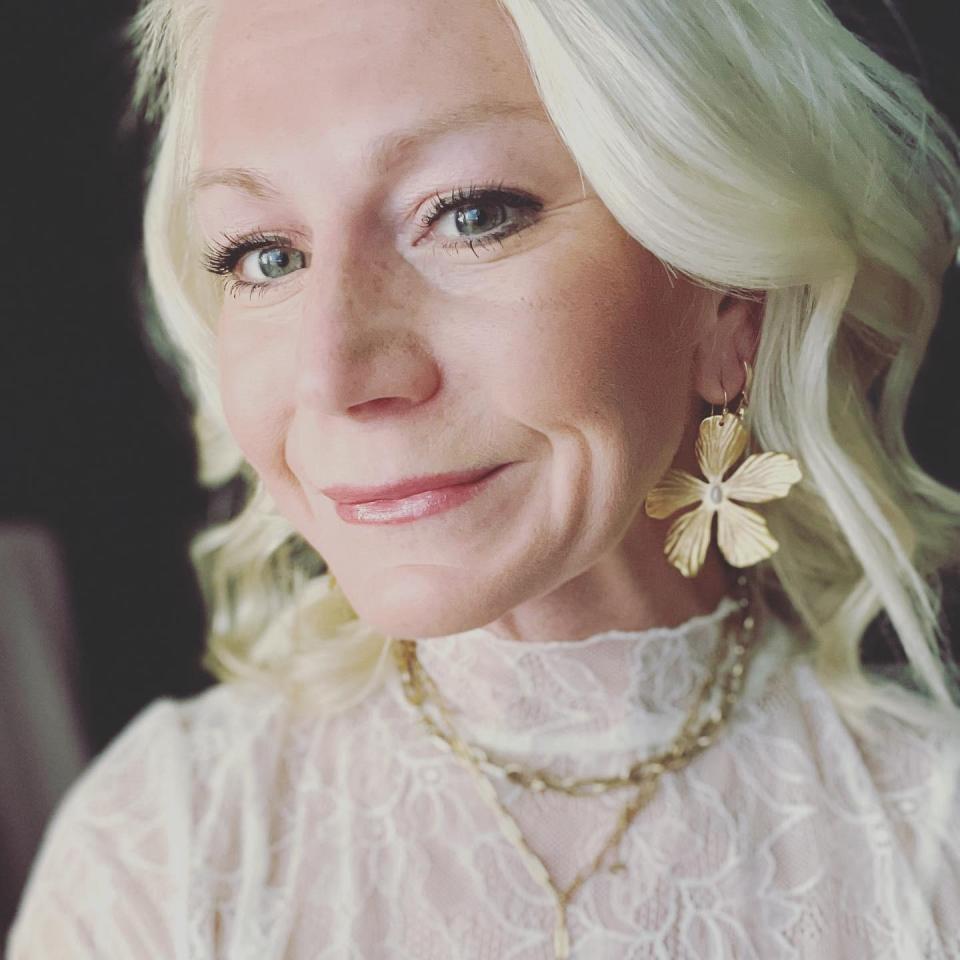Lindsay Aamodt: The former ice queen now on fire in the metaverse

Lindsay Aamodt, Head of Marketing at Upland, talks to Jillian Godsil about her love for ice skating and Web3…
Representing one’s country at the highest level requires determination, skill and dedication. Lindsay Aamodt had all three attributes in abundance when as a young girl she followed her heart into ice skating.
Like the discipline of swimming, ice skating takes a lot of practice and a lot of cold mornings. Aamodt’s brother played ice hockey and when she was four she accompanied her mother and brother to his practices. After the ice hockey team finished their practice the ice skaters took to the ice.
“Ice skating is a very beautiful sport – it’s very athletic, the dresses are beautiful and the whole aesthetic is very visually beautiful,” says Aamodt. “I fell in love with it right away.”
Her involvement escalated very quickly; by the time she was nine years of age she was already competing up and down the East Coast of America.
“It’s a really intense sport and requires hours and hours of practice. From grade school all the way through High School, I was in the ice rink before school and then back afterwards. I lived in Connecticut but my coach was in Rhode Island and Massachusetts, which meant on weekends there was a three hour commute to train for five hours with her. From an early age I understood what it meant to commit to something so deeply.”
Unlike other sports which might require attendance at practice a couple of times a week, the daily nature of ice skating was very impactful. Aamodt reckons it may have delayed her maturity, pushing her to become a late bloomer as all her focus was on the sport.
She also recognises the interesting dynamic that such intense interaction played in her life. Her friends were by necessity the same deeply committed ice skaters – she did not have time to form friends elsewhere in her life – but these same friends were also the people she was competing against.
Her sporting life was not just restricted to the ice, many sessions took place in the gym and indeed in the dance studio.
“We had coaches, some of which were Russian, where we trained in ballet, in dance and in lifting to give us the strength and grace required for ice skating.”
In High School, Aamodt took a few years out but instead pushed her energies into downhill ski racing where she also excelled.
“This was a break from the intensity of ice skating and I enjoyed it – not least because I was very fast, faster than many of my male peer group.”
Aamodt is not sure how fast she went, but it was fast, and before the now-required safety equipment such as helmets. Her event was the super GS which was downhill with huge sweeping banking turns which she loved. It also allowed her to find friends at school outside the insanely competitive skating sorority.

At this time, she also had to make choices about college and she was torn between Boston University which was offering her a ski scholarship and Miami University of Ohio which had a skating team.
“I visited Ohio and went to see the rink. There is something about the smell of an ice rink to a skater. All rinks smell the same and the rush of memories was overwhelming. As soon as I walked into the rink, I was committed to the school.”
This time, Aamodt changed to synchronized skating which required her to ‘regain’ her skating legs and also learn new techniques. She joined the senior varsity team and that year competed in Florida where they won the senior national title. After that she travelled to Sweden to compete in the world competition and her team was placed.
“It was my first year back skating and it was like going from zero to a hundred. At the same time I was figuring out how to be a college student – it was all pretty challenging.”
Aamodt hung up her skating boots at 20. She’d already competed in three different world championships and since women’s ice hockey was introduced to the Olympics before women’s ice skating, she knew her time was up. However, it was not to retire to ordinary college life but instead she transitioned to college in Paris, France, another passion of hers.
As it happens, she landed in Paris on her 21st birthday from New York and just ten days later 9/11 took place.
Leaving wasn’t an option. And of course, her years competing at the highest level had equipped Aamodt to adjust to challenges.
“My sporting experience gifted me discipline. I don’t believe in living off adrenaline which is too focused on short term goals. I’d been taught to zoom out and think about the long term impact of my work and my goals. When looking over my professional career to date, this is reflected in my work. Each job is given the required seriousness and my tenure is appropriate to each. I don’t do fly-by, short time jobs. I like to commit.”
Another aspect of being a national ice skater is the attention to detail and polish. From an early age, it was impressed upon Aamodt that she must always conduct herself to the utmost of her ability.
“This helps me now when working with my team. Here at Upland, I am manager of a whole team. I believe it is my role to help others in my team to perform to their best not to stay where they are, but to learn and grow as part of their career development, which I take very seriously. It’s up to me to figure out their strengths and abilities and where they fit into the team overall.
“I really think about how I can make a contribution that strengthens all of the others. I’m mindful from a marketing perspective how I can optimise every single aspect of the funnel. I can’t just fix acquisition and assume monetization is going to improve. I can’t just fix retention and assume acquisition is going to improve. I have to think of the entire funnel and how all the pieces work together.”
Conversely, there was an ugly side to ice skating which Aamodt has learned to ditch; the lack of balance and where the physical was seen as the ultimate goal without balance to mental and spiritual needs. She turned to yoga as a balance even while skating and that ability to be present, to know how to breathe, to take in a situation has helped her not only in competitive skating but also in the boardroom.
Moving into Web3 poses similar challenges, and yet requires the same balance that Aamodt’s athleticism forced her to learn – learning how to navigate and have the energy for a new space – but it also welcomes deliberate and thoughtful strategies that require the ability to ask questions and learn, which Aamodt loves.
“I love to learn, to ask questions. In Web3 it is so new that everyone is asking questions. In part you need to be fearless but also humble. Ask the question and listen to the answer.”
Aamodt is still very much involved in yoga and pilates and in fact teaches daily. She loves the rigor and the lack of comfort her classes can offer.
“In yoga we are training ourselves how to deal with discomfort, how to navigate tough situations and how to come through the other side. It’s the same with crypto. We need to face the chaos, the failures, the potential issues. Tough times make for good leaders, not the good times.”
Aamodt’s ability to challenge the unknown is core to her role in Upland. As part of her interview process with co-founder Dirk Leuth, she was asked how she felt about the unknown.
“That’s where I thrive,” says Aamodt. “Because the unknown means that it’s up to me to create. It’s not about expectations but learning through the experience which is rarely linear. It is rare that A plus B equals C in this industry. The path is not straight, it’s very curvy.
“At the core of chaos, in the centre is the calm. When faced with chaos, that’s when you need to find your centre so you can make the most diligent steps forward.”
Where the person is the solution not the problem.
Working in the metaverse makes the most sense to Aamodt. It is here she embraces community. Being part of the decision making and the future making.
“It’s very obvious to me that the real world and the digital world have to co-exist. In Upland, we map the metaverse directly to the real world. This allows us to take people’s emotional connections to real places and apply it to our metaverse. People buy property in Upland that is important to them in the real world – it could be expensive real estate or it could be their grandparent’s house.
“And Upland is based on the board game Monopoly so everyone understands it very quickly.”
And just as folk don’t start off with a $2million house in real life, they start off with small digital properties and learn to increase their net worth by buying, trading, building, and selling properties from there.
“Now we’re in Super-App mode. The first level with Upland is buying and selling properties. The second is building immersive spaces on those properties to add value to others – perhaps in the form of a café or gallery or store. That’s where the entrepreneurial side of Web3 comes into play.”
Aamodt sees Upland as giving skills to players, allowing them to feel “like a boss” and build an empire, catering to their entrepreneurial spirit that many don’t know how or are afraid to express in the real world. The bonus to the experience is the community and how engaged they all are in helping other players succeed.
“There is definitely a boost when it comes to people building and growing mini empires in Upland.”